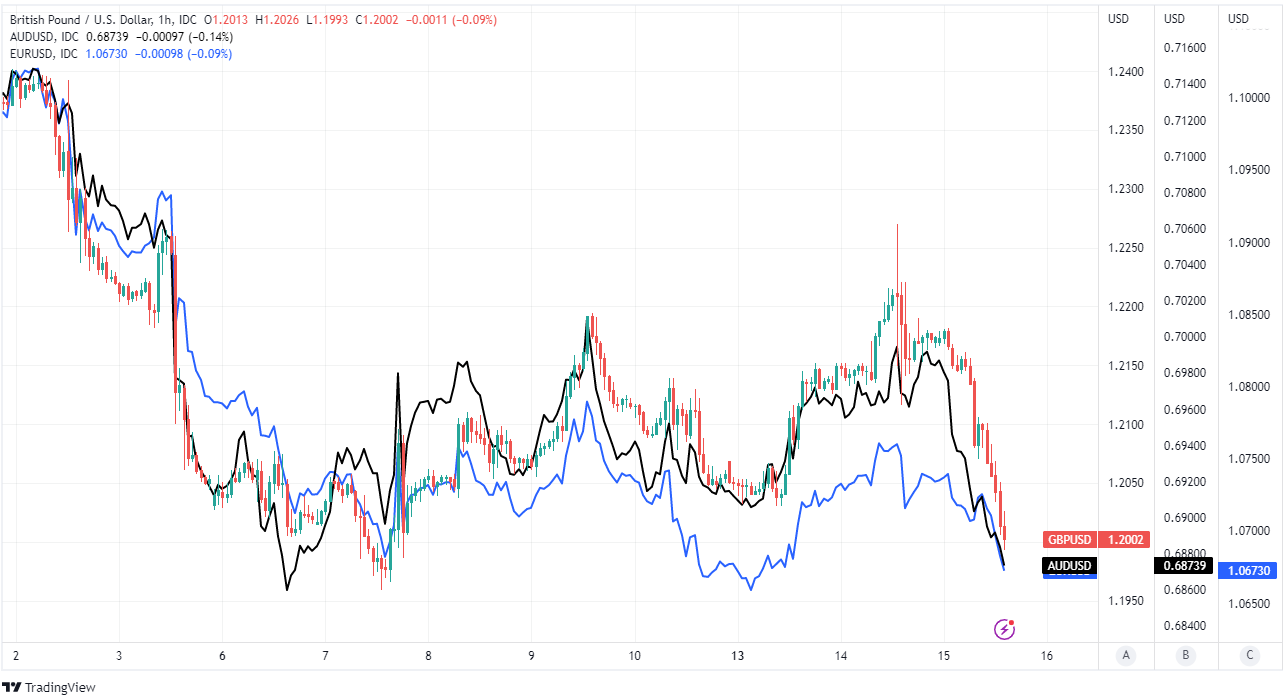Dollar Gains Add to Sterling's Pains after U.S. Retail Sales Rally in January
- Written by: James Skinner
-
"The softness in core services inflation is a risk to our call for an additional 25bp hike in March" - Barclays.

Image © Adobe Images
The Pound to Dollar exchange rate unwound a week's worth of gains in mid-week trade after U.S. retail sales surprised strongly on the upside of expectations for January with the resulting gains for the greenback adding to losses sustained by Sterling following the latest UK inflation data.
Dollars were bought in exchange for most currencies after U.S. retail sales were said to have risen by 3% in month-on-month terms in January, far surpassing the consensus among economists, which had looked for a 1.9% increase.
This lifted total sales to $697 BN nationwide and made for a 6.4% increase when the three months to the end of January are compared with the same period one year ago, while core retail sales growth was similarly strong.
The 2.3% increase in core sales excludes spending on cars and suggests robust demand for smaller value items including food and drink, spending on which was up 25.2% when compared with January 2022 sales.
"This data confirms that the quarter is off to a stronger start than previously thought and cements the need for higher interest rates for longer, as this leaves sales volumes in the control group 6% above their pre-pandemic trendline," says Katherine Judge, an economist at CIBC Capital Markets.

Wednesday's Census Bureau estimate of retail sales comes just as stubbornly elevated January inflation rates challenge the popular market view that an end to the Federal Reserve (Fed) interest rate cycle is in the pipeline.
Rising prices of clothing, transportation and housing services all helped to keep inflation from falling as far as expected when the Bureau of Labor Statistics released data for January on Tuesday, with softer energy prices unable to offset 'core' or 'underlying' domestic inflation pressure.
The inflation data already placed a question mark over whether a recently-declared process of disinflation can be expected to continue but Wednesday's retail sales are unlikely to encourage to the Fed to rest any easier.
"We continue to expect two more 25bp hikes in March and May, bringing the upper bound to 5.25%, before rates then remain on hold for the balance of 2023," says Nicholas Van Ness, an economist at Credit Agricole CIB.
"That said, the Fed will remain data-dependent, and if upcoming inflation data remains on the firmer side, that would open the door for the Fed to continue hiking past the May meeting," Ness writes in a Tuesday research briefing.
Wednesday's retail sales figures followed Office for National Statistics (ONS) data suggesting UK inflation had fallen from 10.5% to 10.1% in January when professional forecasters had looked on average for a decline to only 10.3%.
Even more poignantly for Pound Sterling, the core inflation rate fell further than the overall inflation rate when slipping from 6.3% to 5.9% last month, aided by falling prices of passenger transport, motor fuels, restaurants and hotels.
Softer UK inflation figures were followed by widespread losses for Sterling suggesting the market interprets them as meaning the Bank of England (BoE) is less likely to lift Bank Rate further as a result, although that might not be the safest of assumptions if U.S. interest rates are to continue rising.
"The softness in core services inflation is a risk to our call for an additional 25bp hike in March, which remains our base case given the strength in the labour market," says Abbas Khan, an economist at Barclays.
"The next round of labour market and inflation data, which will be released before the March meeting, will be key," Khan adds.

